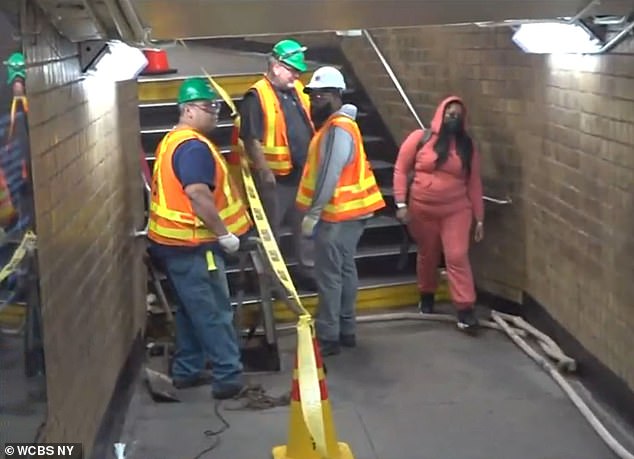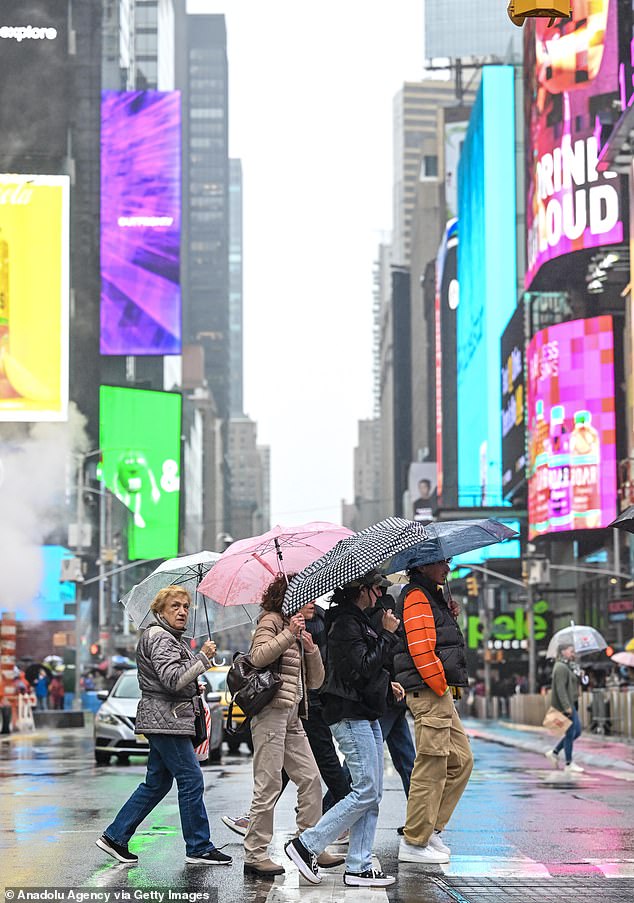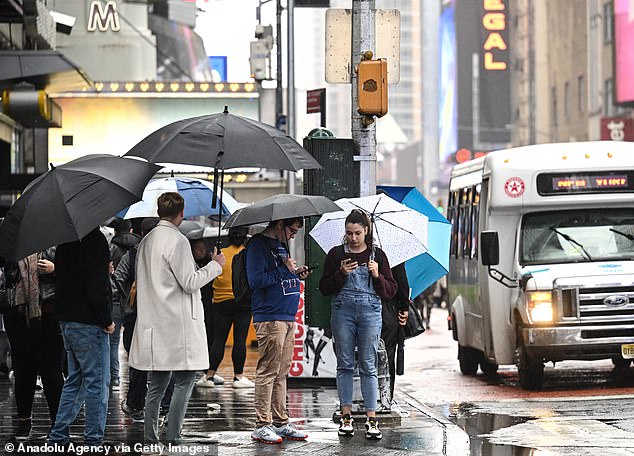NYC braces for FOUR INCHES of rain in a day- which could cause flash flooding citywide – and seriously affect morning and evening commutes
NYC is bracing for four inches of rain a day – which could cause flooding across the city – and seriously impact morning and evening commutes
- Persistent rain is expected to impact 25 million people across New York
- The tri-state area, including New Jersey and Connecticut, will be affected
- City officials warned of ‘widespread travel effects’ during morning commute
New York City will be pummeled by four inches of rain – a copious amount enough to flood subways and roads – impacting morning and evening commutes.
The National Weather Service has issued a flood watch for five New York boroughs and the New York tri-state area, including parts of New Jersey and Connecticut.
There was drizzle and rain in many places in the area on Thursday night, but heavy rain showers will begin on Friday.
From 2 a.m. Friday through 6 a.m. Saturday, persistent rain is expected to affect 25 million people in the New York tri-state area as the National Weather Service warned of a “moderate” risk of flash flooding.
City officials issued a travel advisory from 4 a.m. Friday through 6 a.m. Saturday, warning of possible “widespread travel impacts” during morning traffic.
Persistent rain is expected to impact 25 million people in the New York tri-state area from 2 a.m. Friday through 6 a.m. Saturday

The MTA is also trying to get ahead of the storm as workers began checking the storm drains at the 157th Street subway station
“We urge New Yorkers to prepare for heavy rain and possible flooding through Friday and Saturday morning,” New York Emergency Management Commissioner Zach Iscol said.
“All New Yorkers need to be careful. If you must travel, consider using public transportation and allow extra travel time. If you must drive, avoid driving on flooded roads,” he added.
The MTA is also trying to get ahead of the storm as workers began checking storm drains at the 157th Street subway station on Thursday.
Crews have installed equipment at the station, which is known to flood during heavy rains, so they can help keep the trains moving.
MTA Chairman and CEO Janno Lieber said, “No matter what we do, there will be water in the subway system… The good news is that this system is designed to take water and pump it out in large quantities,”
The MTA will monitor conditions during the storm and make repairs as necessary after the 24-hour situation room is activated.
Lieber added in a statement: “This is a serious storm and we are taking it seriously.”
Even an inch or two of rain could lead to flooding in parts of NYC and nearby regions still saturated from last weekend’s storm.

Certain parts of NYC are still saturated from last weekend’s storm. People walking through the rain in Manhattan last week (photo)

The rain showers are being caused by the remnants of Tropical Storm Ophelia, experts say
The heaviest rainfall is expected from central New Jersey north to Manhattan, Long Island, southern Connecticut and the Hudson Valley.
Neighboring cities like Philadelphia and Boston could receive up to two inches of rain.
The potential flood threat could be dangerous for cities like New York, considering how Hurricane Ida in 2021 drowned 11 people, including a two-year-old boy, in their basement apartments.
The showers are the result of the remnants of Tropical Storm Ophelia with converging winds just to the north, Fox Weather meteorologist Greg Diamond said. The mail.
New Yorkers were warned Sunday to prepare to seek higher ground as Post-Tropical Cyclone Ophelia continued to lash the East Coast with wet weather.
Ophelia was a near-hurricane tropical storm when it crashed near Emerald Isle, North Carolina, on September 24.
The power went out and the coastal streets were flooded. Last week, states of emergency were declared in Virginia, North Carolina and Maryland.
